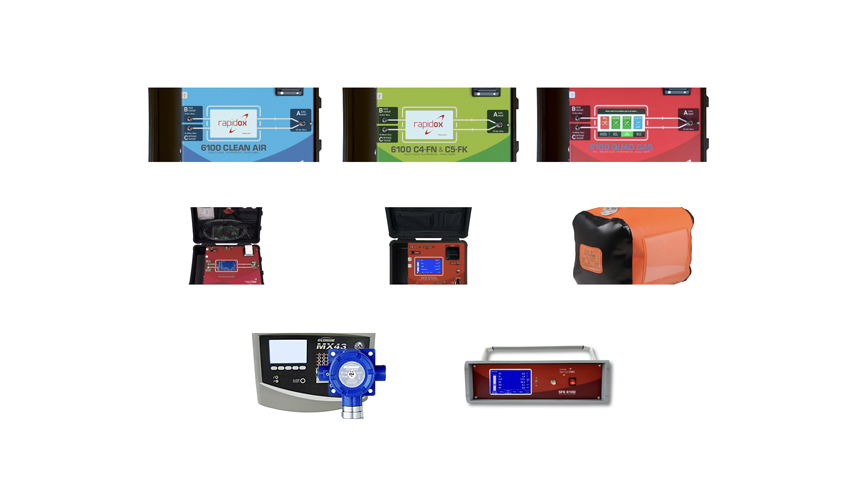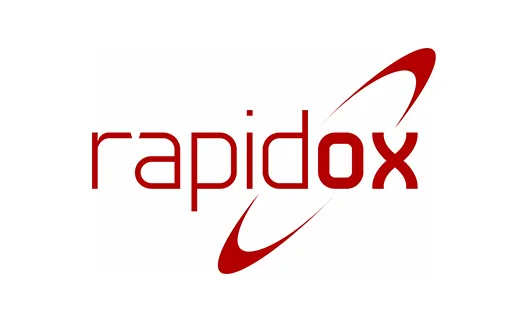

From Laboratory to Field: The Evolution of SF₆ Gas Testing Equipment
Why SF₆ Testing Matters More Than Ever
A guide exploring SF6 Testing Equipment Evolution.
Sulphur hexafluoride (SF₆) has long been used in high-voltage switchgear due to its superior dielectric strength and arc-quenching properties. However, with growing environmental concerns surrounding its high Global Warming Potential (GWP) and increasing regulatory pressure, the need for accurate, reliable, and portable testing equipment has never been more critical.
As SF₆ remains integral to many existing electrical systems, testing and monitoring its quality, concentration, and emissions are vital for safety, compliance, and sustainability. This article explores the evolution of SF₆ testing equipment, from early manual bench analysers to today’s advanced field-ready digital solutions.
We’ll also highlight Cambridge Sensotec’s pioneering role in advancing gas analysis instrumentation and setting new industry standards.
1. The Early Days of SF₆ Testing: Manual Processes and Laboratory Constraints
In the early years of SF₆ gas use, testing equipment was largely confined to laboratory environments. These systems were bulky, manually operated, and required technical expertise to interpret data. Early analysers typically relied on single-gas sensors and analog output systems, which made precise measurements time-consuming and often prone to human error.
Key Limitations:
- Lack of portability
- Limited sensor technology
- Manual calibration and data interpretation
- High risk of sample contamination or data drift
Despite these constraints, these early systems laid the groundwork for understanding SF₆ behaviour under various electrical loads and environmental conditions.
2. The Digital Revolution: Integration of Microprocessors and Automated Calibration
The 1990s and early 2000s marked a significant turning point in gas analysis technology. The integration of microprocessors enabled real-time data processing, digital interfaces, and automated calibration routines – reducing the margin for error and increasing consistency.
Major Breakthroughs:
- Digital displays and user interfaces
- Improved sensor accuracy and stability
- USB and RS232 data output for documentation
- Automated zero/span calibration for improved field reliability
These innovations moved testing equipment beyond the laboratory and into the substation – bridging the gap between on-site engineers and laboratory-grade data.
3. Field-Ready Innovation: Portable SF₆ Analysers for On-Site Testing
Modern SF₆ testing equipment is now designed to be rugged, portable, and highly accurate – empowering engineers to conduct tests directly in the field with minimal setup time. These systems are equipped with multi-gas sensors, touch-screen interfaces, and cloud integration, making it easier than ever to comply with regulations and prevent gas leakage.
Example: Cambridge Sensotec’s Rapidox Range
Cambridge Sensotec has played a leading role in this field-based evolution. Their Rapidox SF₆ analysers, such as the Rapidox 6100 Portable Gas Analyser, offer:
- Simultaneous measurement of SF₆, SO₂, H₂O, and HF
- Data logging with USB download and remote access
- Fully programmable alarms and sampling modes
- Touchscreen operation for intuitive use in harsh conditions
- Modular design for custom sensor integration
These features enable utilities, maintenance crews, and testing specialists to get accurate, actionable data on the spot – drastically improving efficiency and response time.
4. Integration with Smart Grids and Predictive Maintenance
As electrical infrastructure becomes more digitised, SF₆ testing equipment is now integrating with smart grid ecosystems. This includes:
- IoT and remote monitoring capabilities
- Integration with SCADA and asset management platforms
- Predictive diagnostics for equipment health and gas lifecycle tracking
This level of integration enables proactive maintenance strategies and helps organisations reduce unplanned outages and costly repairs.
5. Responding to Regulatory Demands and ESG Goals
With stringent F-Gas regulations in the EU and similar policies emerging globally, SF₆ testing is no longer optional – it’s a regulatory imperative. Modern SF₆ analysers are now designed to simplify compliance:
- Automated leak detection and report generation
- Environmental traceability through logged emission history
- Calibration certificates and audit trails
Organisations with strong Environmental, Social, and Governance (ESG) mandates can also use testing data to demonstrate responsible gas handling and align with net-zero objectives.
6. From One Gas to Many: The Rise of Multi-Gas SF₆ Testing Equipment
The Shift from Single-Gas to Multi-Gas Analysis
Historically, SF₆ testing equipment was designed primarily to assess SF₆ gas purity, ensuring that insulation levels met operational requirements. However, modern switchgear systems are more complex, and understanding the full health of both the insulating gas and the electrical components demands a more comprehensive approach.
Today’s advanced SF₆ testing equipment – such as the Rapidox range by Cambridge Sensotec – has evolved to provide multi-gas analysis, enabling simultaneous detection of several key gases. This transformation allows maintenance teams and engineers to gain deeper insights into equipment condition, predict faults, and prevent failures.
Why Multi-Gas Detection Matters
By measuring multiple gases at once, testing equipment moves beyond purity checks and into predictive diagnostics. Each gas offers unique insights into what may be happening inside your gas-insulated switchgear (GIS).
Moisture (H₂O)
Moisture is one of the most critical parameters to monitor in SF₆-insulated systems. Even trace amounts of water can lead to:
- Insulation breakdown due to reduced dielectric strength
- Accelerated chemical reactions between SF₆ and internal components
- Corrosion of metal parts, leading to premature equipment failure
Measuring H₂O content helps engineers assess gas contamination and insulation degradation, ensuring the system’s integrity and extending its operational lifespan.
Sulphur Dioxide (SO₂) and Hydrogen Fluoride (HF)
These are toxic byproducts formed when SF₆ gas breaks down, often due to:
- Electrical arcing during circuit breaker operation
- Thermal stress in high-voltage systems
- Prolonged exposure to moisture or contaminants
SO₂ and HF not only indicate SF₆ decomposition but also signal that the internal components may be under duress. Their presence serves as a red flag for maintenance teams to inspect the system more thoroughly.
Detecting these byproducts allows for early fault diagnosis, avoiding unplanned outages and costly repairs.
Decomposition Products
In addition to SO₂ and HF, other breakdown compounds such as SOF₂, SO₂F₂, and S₂F₁₀ may be present, depending on operating conditions. These decomposition gases are important for:
- Assessing the severity of internal faults
- Estimating the age and stress level of the insulating medium
- Determining the need for gas recycling or replacement
Tracking a wide range of decomposition products ensures a comprehensive picture of system health – far beyond what SF₆ purity alone can reveal.
Integrated Multi-Gas Testing: A Single Solution for Complex Needs
Modern SF₆ analysers, like the Rapidox 6100 Portable or Bench Units, are engineered to detect SF₆, H₂O, SO₂, HF, and other trace gases simultaneously, without requiring multiple instruments. This integrated approach delivers:
- Faster diagnostics with fewer connection points and lower risk of contamination
- Reduced operational costs by eliminating the need for separate devices
- Compliant reporting for environmental regulations and safety standards
These analysers are also equipped with automated calibration, programmable alarm thresholds, and USB/cloud-based data logging, making them indispensable tools in both fieldwork and lab environments.
The Future: Expanding Capabilities Beyond SF₆
As industries move toward SF₆-free alternatives like DryAir, Fluoronitrile, and Vacuum Insulation, multi-gas analysers are being adapted to monitor new gas compositions. Equipment that once focused solely on SF₆ now plays a crucial role in validating and supporting alternative technologies.
With Cambridge Sensotec at the forefront, the rise of multi-gas SF₆ testing equipment continues to push the boundaries of what’s possible in electrical asset health management.
7. Cambridge Sensotec’s Role in the Evolution of SF₆ Testing Equipment
Pioneering Innovation in Gas Analysis Since 2000
For over two decades, Cambridge Sensotec has led the charge in developing precision gas analysis instrumentation, with a core focus on improving SF₆ testing equipment. The company has been instrumental in pushing the boundaries of what’s technically possible, blending laboratory-grade accuracy with field-ready portability and automation.
From the early days of single-gas analysis to today’s multi-gas, digitally integrated platforms, Cambridge Sensotec has played a pivotal role in shaping the global standard for SF₆ gas analysis.
Notable Technological Innovations
Rapidox 6100 Series (Bench & Portable)
The Rapidox 6100 range was developed to offer high-performance SF₆ analysis in both laboratory and field settings. These analysers deliver:
- Simultaneous measurement of SF₆, H₂O, SO₂, HF, and other gases
- Full laboratory-grade diagnostics in a compact, portable format
- High-speed warm-up, touchscreen interface, and USB data logging for maximum usability and efficiency
This range exemplifies the convergence of mobility, precision, and real-time diagnostics, allowing engineers to test and maintain equipment faster and with greater confidence.
Auto-Cal Systems
To reduce manual intervention and service disruption, Cambridge Sensotec introduced Auto-Calibration functionality. This innovation allows for:
- Scheduled automated calibration cycles
- Reduced downtime during field operations
- Higher accuracy and consistency across long-term use
By eliminating the need for frequent manual recalibration, Auto-Cal ensures minimal human error and maintains compliance with strict reporting standards.
Customisable Sensor Modules
Different industries face different gas composition challenges. To meet these diverse requirements, Cambridge Sensotec offers bespoke sensor configurations:
- Sensors tailored for detecting exotic gases, decomposition byproducts, or specific moisture thresholds
- Plug-and-play architecture allowing for rapid reconfiguration
- Custom builds for niche applications like medical-grade SF₆ or additive manufacturing
This flexibility is critical for customers operating in complex environments where a one-size-fits-all approach simply doesn’t work.
Digital Integration for Seamless Reporting
Modern switchgear maintenance teams rely on data – not just readings. That’s why Cambridge Sensotec has invested heavily in:
- RS232, RS485, Modbus RTU, and Ethernet connectivity
- USB data export with Excel-compatible formats
- Custom dashboard software for trend analysis and compliance reporting
These digital capabilities empower teams to track gas quality over time, predict maintenance windows, and ensure regulatory documentation is easily generated and stored.
A Continuous Investment in Research & Development
Cambridge Sensotec doesn’t stand still. As SF₆ regulations tighten and the energy transition accelerates, the company is committed to staying ahead of the curve. Ongoing areas of R&D include:
- Sensor miniaturisation: making portable analysers lighter and more field-friendly
- Hybrid gas compatibility: expanding support for SF₆ alternatives like DryAir and fluoronitriles
- Predictive analytics and AI-based fault prediction, integrating historical gas trends into maintenance planning
The result is a pipeline of next-generation testing tools designed to meet the evolving needs of utilities, OEMs, and industrial operators worldwide.
Trusted by Engineers and Industry Leaders
From global utility providers to specialist switchgear manufacturers, Cambridge Sensotec’s Rapidox range is trusted for its:
- Accuracy and repeatability
- Ease of use in demanding environments
- Robust design and long-term reliability
Its role in advancing SF₆ gas testing equipment has helped not only improve operational safety but also support the industry’s transition to more sustainable gas handling practices.
Quick Summary: A Legacy of Innovation, A Future of Possibility
Cambridge Sensotec’s contributions to SF₆ gas analysis have been nothing short of transformative. With a clear focus on innovation, user experience, and compliance, the company has helped thousands of operators improve the safety, accuracy, and efficiency of SF₆ gas monitoring.
As the global switchgear industry moves towards SF₆-free alternatives, Sensotec’s role in delivering high-performance, adaptive, and future-ready testing equipment will only become more vital.
8. What’s Next? The Future of SF₆ Gas Testing
Looking forward, the evolution of SF₆ testing equipment is expected to follow several key trends:
- AI-Powered Analytics: Machine learning to identify patterns in gas degradation
- Cloud-Based Monitoring: Real-time data sharing across sites and teams
- Battery-Powered & Wearable Devices: For use in tight or hazardous environments
- Cross-compatible gas testing systems: Supporting SF₆ alternatives like DryAir, Fluoronitrile, or Vacuum
As the industry moves toward SF₆-free switchgear, the demand for versatile, adaptive testing equipment will continue to grow.
Conclusion: From Lab Bench to Substation – A Story of Innovation
The evolution of SF₆ testing equipment – from bulky lab systems to field-ready digital platforms – reflects the broader transformation in how we manage and maintain electrical infrastructure. With new challenges around regulation, sustainability, and system performance, Cambridge Sensotec remains a trusted innovator in the field.
Their commitment to accuracy, usability, and compliance ensures that organisations across the globe can test, monitor, and manage SF₆ systems with confidence – whether in a lab, on a wind farm, or in a high-voltage substation.
Interested in upgrading your SF₆ testing capabilities?
Visit www.sf6.co.uk or contact the Cambridge Sensotec SF6 team to explore the latest in gas analysis instrumentation.


